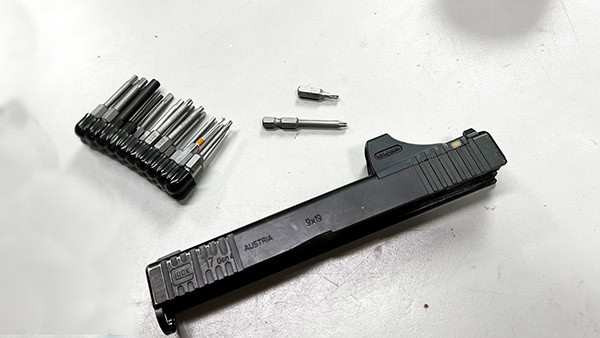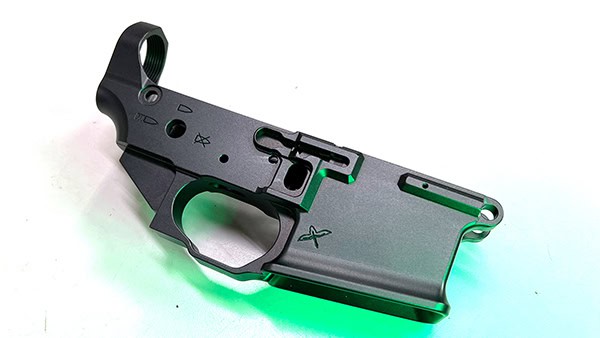SureFire SOCOM-4 Series—A New Fighting Suppressor
Fountain Valley, CA—SureFire, LLC, manufacturer of the world’s finest—and most innovative—illumination tools and…
Fountain Valley, CA—SureFire, LLC, manufacturer of the world’s finest—and most innovative—illumination tools and…
Shinenyx—creators of a cutting-edge fusion of digital night vision and thermal imaging technology—has…
German Precision Optics’ Passion APO is a high-performance compact spotting scope designed and…
The Mod-Navy Qual I’ve been doing this qual (or drill, or whatever the current nom…
• Built for road trips and off-road use• Manual transmission equipped• Wrapped in MultiCam Arctic…
I designed the Button Man to give shooters a low-round-count, low-light-engagement drill that involved both…
IDGA Q&A with Dr. Jeffrey C. Banks, Department Head – Complex System Monitoring & Automation, Applied Research Laboratory, Pennsylvania State University
[dcs_img_right
framed=”black” w=”181″ h=”76″]
http://gunsandtactics.wpengine.com/wp-content/uploads/2012/03/logo_idga.jpg
[/dcs_img_right]
IDGA: You’ll be discussing advanced electrical power technologies and vehicle health management for tactical wheeled vehicles at IDGA’s Tactical Vehicle Summit. Could you describe how modular hydraulic powered generators enable maximum electrical power at engine idle?
JB: The typical tactical wheeled vehicle power generation device (alternator/generator) is driven from an engine power take-off (PTO) that has linear current output that directly corresponds to engine speed. The maximum alternator/generator rated current output is provided at a typical vehicle cruise speed (i.e. 55 mph) corresponding to a high engine speed. Data from the AMSAA field sample data collection activity shows that many tactical wheeled vehicles spend half of their time operating in an engine idle speed mode primarily to operate their auxiliary systems such as radios and air conditioner systems. At engine idle speed the rated current output of the alternator/generators is relatively low, which limits the ability to provide sufficient current output for the auxiliary systems. The low alternator/generator output issue at engine idle is compounded by the extreme high temperature operational environment that has an additionally negative effect on the output capability. To address this issue, the standard alternators/generators are being replaced with oversized higher output alternators that provide a greater output at engine idle speeds but this solution has an increased cost associated with its implementation.
An alternative approach that we have developed for PM-HTV is to repurpose the winch hydraulic motor (these devices are no longer used on the HEMTT A2 platform) as a drive for an alternator/generator. The system is designed to drive the alternator/generator at a maximum current output with the hydraulic motor rated to provide this capability at engine idle speed. The vehicle can provide the required electrical power needed at engine idle with an appropriate size alternator/generator. This results in a net fuel savings because the alternator/generator can operate at a more efficient point on its operating curve. Operating at too low/high current output or at too low/high drive speed lowers the efficiency and therefore wastes energy.
Click here to read full story…
Dr. Jeffrey C. Banks is the Department Head – Complex System Monitoring & Automation, Applied Research Laboratory, at the Pennsylvania State University. (Additional information was provided here by Karl Reichard, Assistant Professor of Acoustics at Penn State and Head of the Embedded Monitoring & Control Systems Department at the University’s Applied Research Laboratory.) Dr. Banks will be speaking at IDGA’s 5th Annual Tactical Vehicles Summit, to be held from April 23-25, 2012 in Washington, DC. For more information on the event, visit www.TacticalVehiclesSummit.com or call 1-800-882-8684. For comprehensive defense and government news and information, visit www.idga.org
Guns & Tactics is an online media outlet that focuses on the firearms community, not just firearms and gear but also quality training, technical break downs and enlightening presentations.

Fort Worth, Texas: Introducing the new CMC Triggers AR-15/AR-10 Combat Curve Trigger (CCT™) … The innovative design combines the comfort of the classic curve with the indexing of…

Quick Tip Tuesday. If you work on handgun red dot stuff you need these bits! So be a pro and use the best bits!

Today, GiantMouse is releasing the new ACE Corta in Natural Canvas Micarta, Green Canvas Micarta, and Black G10.

The Forward Controls / Sons of Liberty LRF Lower Receiver has been in super hot demand since it was announced.

Winchester Ammunition is pushing the limits of technology to introduce a new and improved shotshell for waterfowl hunting. Blind Side 2
![Primary Weapons Systems BDE Suppressor & MOD 2 Lower [Triggrcon 2022]](https://un12magazine.com/wp-content/uploads/2022/10/Primary-Weapons-Systems-Triggrcon-2022-768x432.jpg)
Dave puts some rounds through the Primary Weapons Systems BDE Suppressor and we chat with Jason about the BDE and the all new MOD 2 lower.
© 2025 UN12 Magazine
© 2025 UN12 Magazine
Wait! Don’t forget to